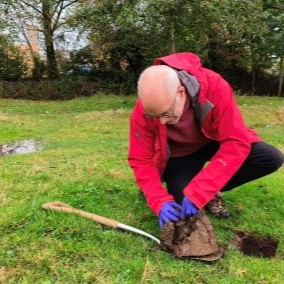Researchers find the ‘key’ to quantum network solution
Posted on 26 May 2015
Credit: Carlo OttavianiWorking with colleagues at the Technical University of Denmark (DTU), Massachusetts Institute of Technology (MIT), and the University of Toronto, they have developed a protocol to achieve key-rates at metropolitan distances at three orders-of-magnitude higher than previously.
Standard protocols of Quantum Key Distribution (QKD) exploit random sequences of quantum bits (qubits) to distribute secret keys in a completely secure fashion. Once these keys are shared by two remote parties, they can communicate confidentially by encrypting and decrypting binary messages. The security of the scheme relies on one of the most fundamental laws of quantum physics, the uncertainty principle.
Today's classical communications by email or phone are vulnerable to eavesdroppers but quantum communications based on single particle levels (photons) can easily detect eavesdroppers because they invariably disrupt or perturb a quantum signal. By making quantum measurements, two remote parties can estimate how much information an eavesdropper is stealing from the channel and can apply suitable protocols of privacy amplification to negate the effects of the information loss.
However, the problem with QKD protocols based on simple quantum systems, such as single-photon qubits, is their low key-rate, despite their effectiveness in working over long distances. This makes them unsuitable for adaptation for use in metropolitan networks.
The team, led by Dr Stefano Pirandola, of the Department of Computer Science at York, overcame this problem, both theoretically and experimentally, using continuous-variable quantum systems. These allow the parallel transmission of many qubits of information while retaining the quantum capability of detecting and defeating eavesdroppers. The research is published in Nature Photonics.
Dr Pirandola said: “You want a high rate and a fast connection particularly for systems that serve a metropolitan area. You have to transmit a lot of information in the fastest possible way; essentially you need a quantum equivalent of broadband.
“Continuous-variable systems can use many more photons but are still quantum based. Our system reaches extremely high speeds by three orders of magnitude higher than ever before over a distance of 25 kilometres. Its effectiveness above that distance decreases rapidly however.
“Nevertheless, our protocol could be used to build high-rate quantum networks where devices securely connect to nearby access points or proxy servers.”
Dr Pirandola was funded by the Engineering and Physical Sciences Research Council.
The University of York leads a unique collaboration to exploit fundamental laws of quantum physics for the development of secure communication technologies and services for consumer, commercial and government markets.
The Quantum Communications Hub is one of four in the EPSRC’s new £155m National Network of Quantum Technology Hubs.
Further information:
- The paper ‘High-rate measurement-device independent quantum cryptography’ by Stefano Pirandola, Carlo Ottaviani, Gaetana Spedalieri, Christian Weedbrook, Samuel L Braunstein, Seth Lloyd, Tobias Gehring, Christian S Jacobsen and Ulrik L Andersen is published in Nature Photonics. A link to the paper can be found here: http://dx.doi.org/10.1038/nphoton.2015.83
- For more information about the Department of Computer Science at the University of York, please visit http://www.cs.york.ac.uk/
- The Engineering and Physical Sciences Research Council (EPSRC) is the UK’s main agency for funding research in engineering and the physical sciences. EPSRC invests around £800 million a year in research and postgraduate training, to help the nation handle the next generation of technological change. The areas covered range from information technology to structural engineering, and mathematics to materials science. This research forms the basis for future economic development in the UK and improvements for everyone’s health, lifestyle and culture. EPSRC works alongside other Research Councils with responsibility for other areas of research. The Research Councils work collectively on issues of common concern via Research Councils UK. www.epsrc.ac.uk
Explore more news

Rising costs of mental healthcare in England revealed in new report
Monday 4 November 2024

Pilot project provides free school meals to thousands more children
Wednesday 23 October 2024

UK Quantum Communications Hub celebrates 10 year milestone
Wednesday 23 October 2024

University of York researcher explores how climate change and flooding is affecting earthworms
Sunday 20 October 2024

New service launched to enable individuals to take control of their online data
Thursday 17 October 2024
